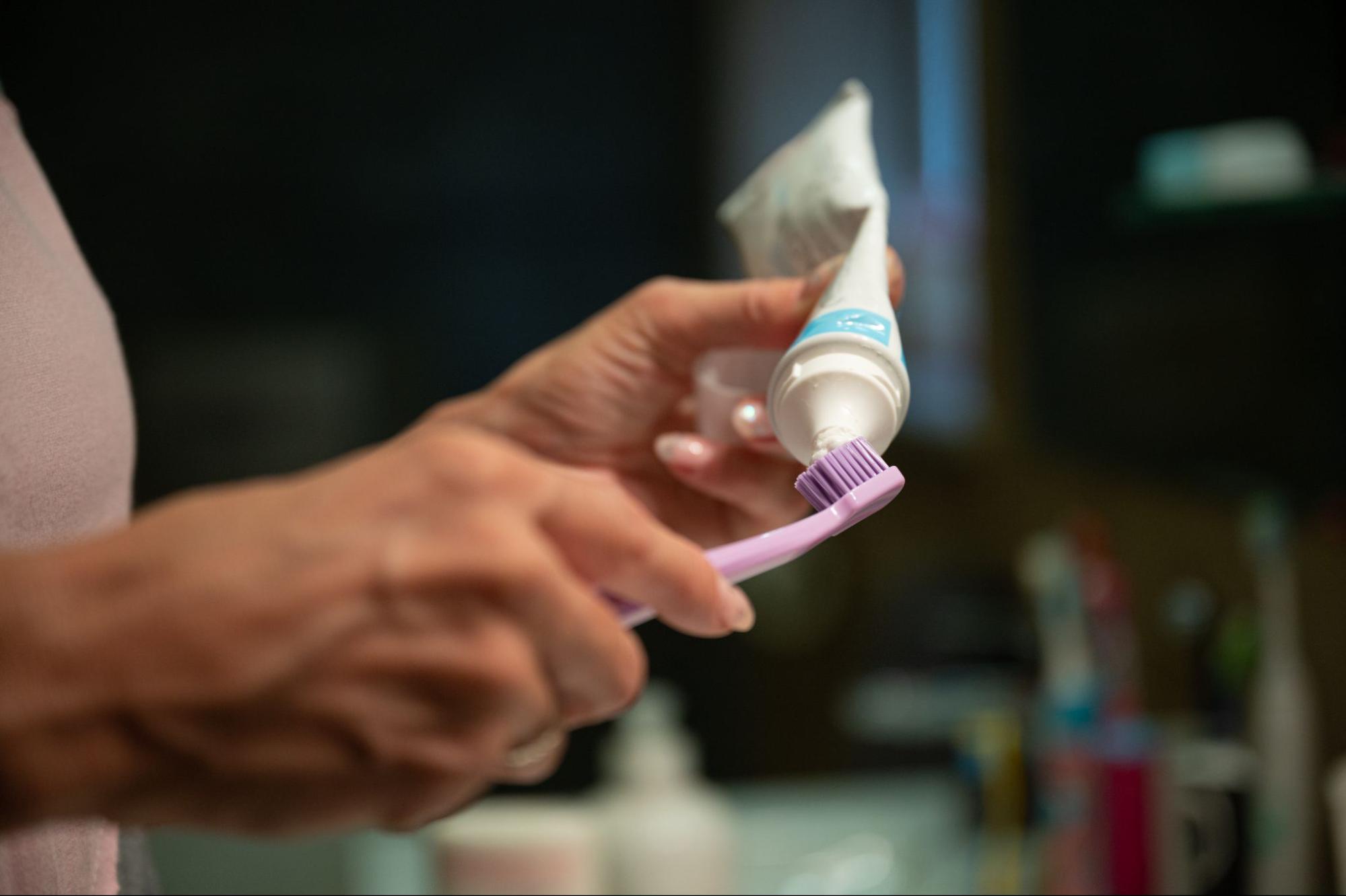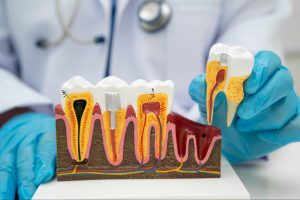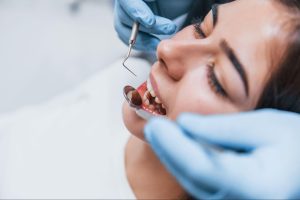Fluoride is a naturally occurring mineral found in water, soil, and certain foods, commonly known for its direct effect on tooth health. It strengthens enamel and helps prevent tooth decay, which is why it’s a key ingredient in most toothpastes and many public health programs. Its presence in community water systems has significantly reduced cavity rates across populations, especially in areas with limited access to dental care. Scientists have studied it for decades to confirm its benefits and safe usage in controlled amounts. Despite debates and misinformation, fluoride continues to be a widely used tool in protecting oral health.
What is Fluoride and How it Became Key to Oral Health
Fluoride is a natural mineral that forms when fluorine combines with other soil, rocks, and water substances. It appears naturally in varying levels across different regions, often ending up in local water supplies and certain foods like tea, fish, and leafy greens. Scientists first identified fluoride’s link to dental health in the early 1900s after observing communities with fewer cavities had higher natural fluoride levels in their drinking water. This discovery led to decades of research on how it affects tooth enamel and oral health. Today, fluoride is widely recognized for its ability to strengthen teeth and reduce decay when used in safe, controlled amounts.
Roles of Fluoride in Oral Health
Many are aware of fluoride’s benefits in oral health. It helps protect teeth against decay by making enamel more resistant to acid attacks and supporting the natural repair of early damage. Its effects are backed by decades of dental research and real-world use in personal care products and professional treatments. By including fluoride in daily routines, people can lower their risk of cavities without significantly changing their habits. Fluoride supports oral health by:
Helping Remineralize Tooth Enamel
Fluoride bonds with minerals like calcium and phosphate to rebuild weakened areas of enamel. Thus, it slows down or even reverses the early stages of tooth decay. Remineralized enamel becomes robust and less prone to future damage. It helps prevent cavities before they require fillings or more serious treatment.
Making Teeth More Acid-Resistant
Bacteria in the mouth produce acid after food breaks down, weakening enamel. Fluoride changes the structure of developing enamel to make it more resistant to this acid. In adults, it forms a surface layer that slows enamel erosion. Daily exposure helps maintain this defense, especially in people prone to plaque buildup.
Disrupting Bacteria That Cause Cavities
Fluoride affects the activity of bacteria in plaque, making it harder for them to grow and stick to teeth. It lowers their ability to produce acid and slows their growth. Over time, this reduces the risk of cavities forming in high-risk areas like grooves and gumlines. It also helps limit the spread of decay between teeth.
Supporting Oral Health Across All Ages
Children benefit during tooth development, while adults gain protection through regular use. Fluoride adapts to different needs, offering long-term support for people with braces, gum issues, or dry mouth. Dentists often adjust fluoride use based on age and risk level. It stays relevant at every stage of dental care.
Fluoride’s Impact on Children’s Developing Teeth
Fluoride supports strong, healthy oral for kids during the early years of growth and development. It helps shape enamel before teeth break through the gums and continue to protect as the child grows. Dentists often recommend fluoride early to help reduce future dental problems. These effects build a stronger foundation for lifelong oral health:
Strengthens Enamel Before Teeth Erupt
Fluoride gets absorbed into the body and helps form harder more acid-resistant enamel. This process happens before the teeth come in, making them better equipped to handle bacteria and food acids. Children exposed to safe fluoride levels early often develop fewer cavities. The mineral works during this hidden stage to boost protection from the start.
Reduces Early Childhood Cavities
Children who use fluoride toothpaste or drink fluoridated water tend to get fewer cavities in their baby teeth. Lower decay in early years means less pain, fewer dental visits, and better long-term habits. Tooth decay in childhood can also affect adult teeth, so early protection matters. Fluoride helps stop that cycle before it starts.
Supports Healthy Tooth Eruption
Proper enamel formation helps teeth grow stronger and more resistant to damage. As new teeth emerge, fluoride exposure helps harden any soft spots on the surface. It gives each new tooth a stronger start as it enters the mouth, leading to better chewing, speaking, and confidence for kids.
Guides Safer Oral Care Habits Early On
Parents who follow fluoride recommendations help their kids learn good brushing routines. Starting with the right amount of fluoride toothpaste teaches safe, daily use. Dentists often provide fluoride varnish during checkups to boost early protection. These habits set the tone for responsible dental care through childhood and beyond.
Common Sources of Fluoride for Dental Health
Fluoride enters daily routines through natural and added sources, helping people protect their teeth without much effort. Most products used in brushing or rinsing already contain the necessary amount to lower cavity risk. Some communities also benefit from water fluoridation, while dentists provide additional treatments for those who need extra protection. These sources work together to make fluoride easy to access and use:
Toothpaste and Mouth Rinses
Most toothpaste brands include fluoride as a key ingredient to fight cavities. Regular brushing coats the teeth in fluoride, giving them daily protection. Mouth rinses offer added support, especially for people prone to decay. These products are widely available and easy to add to any routine.
Community Water Fluoridation
Many local water systems add fluoride to tap water to help reduce cavities across entire communities. Drinking this water throughout the day provides constant, low-level exposure that strengthens enamel. This approach benefits people regardless of income or access to dental care. It’s considered a reliable way to protect both children and adults.
Professional Fluoride Treatments
Dentists may apply fluoride as a varnish, gel, or rinse during checkups. These treatments give high-concentration protection for people at risk of tooth decay. They’re invaluable after cleanings or for patients with weak enamel. Regular applications can reduce the need for future dental work.
Fluoride Tablets and Drops
In areas without fluoridated water, dentists might recommend fluoride supplements for kids. These come in tablet or drop form and help build stronger enamel during early development. The dosage depends on the child’s age and the fluoride level in their local water. A dentist or pediatrician usually provides guidance for safe use.
Naturally Fluoridated Foods and Beverages
Certain foods and drinks, like black tea, seafood, and cooked spinach, naturally contain small amounts of fluoride. These sources aren’t enough, but they can support other fluoride uses. Their effect builds over time as part of a balanced diet. They also show how fluoride occurs in nature without added chemicals.
Are Professional Fluoride Treatments Safe?
Dentists use fluoride treatments to give stronger protection against decay, especially for patients who need more than daily brushing can provide. These treatments are backed by years of dental research and are used in controlled amounts to avoid overexposure. Most people tolerate them well; dentists tailor the treatment based on age and cavity risk. Regular use under professional care keeps the benefits high and the risks low.
Measured for Safety and Effectiveness
Dentists follow strict guidelines when applying fluoride varnish, gels, or rinses. Each product is designed to deliver benefits without causing harm or buildup. The treatment stays on the teeth briefly and is often done after cleaning. This process makes it easy to control and safe to repeat as needed.
Monitored Based on Patient Needs
Dentists only recommend professional fluoride if the patient has signs of high cavity risk. This could include weak enamel, frequent decay, dry mouth, or braces. The treatment plan depends on the person’s age, health, and history of dental issues. This personalized approach helps avoid unnecessary exposure.
No Harmful Effects in Routine Use
When done by trained dental professionals, fluoride treatments do not damage the teeth or gums. The amounts used are far below harmful levels, even after repeated visits. Side effects like mild staining or irritation are rare and usually temporary. Long-term studies have shown that regular treatments improve oral health without lasting problems.
Safe for Children and Adults
Kids often receive fluoride varnish at dental checkups to protect developing teeth. Adults benefit from treatments during routine cleanings, especially if enamel loss or sensitivity is a concern. The process is quick, painless, and adjusted for age. Dentists know how to deliver the right amount without overdoing it.
Backed by Dental Organizations
Groups like the American Dental Association and CDC support professional fluoride use as part of complete dental care. These endorsements are based on years of research and public health success. Guidelines exist to make sure treatments stay safe and effective. Patients can feel confident knowing the process is trusted by dental experts.
Learn the Truth About Fluoride for Dental Peace of Mind
Fluoride continues to prove its value in protecting teeth and lowering the risk of decay, especially when appropriately used through daily care and professional support. Knowing how it works, where it comes from, and why dentists trust it removes the guesswork and hesitation that often come with mixed messages. It’s not about choosing sides—it’s about using facts to care for your teeth better. Confidence in fluoride helps ease dental worries and builds a stronger foundation for lifelong oral health. When you understand its purpose, dental care becomes one less thing to stress about.
Wondering what fluoride is? Read our Meader Family Dentistry blog to learn more about dental-related stories.






